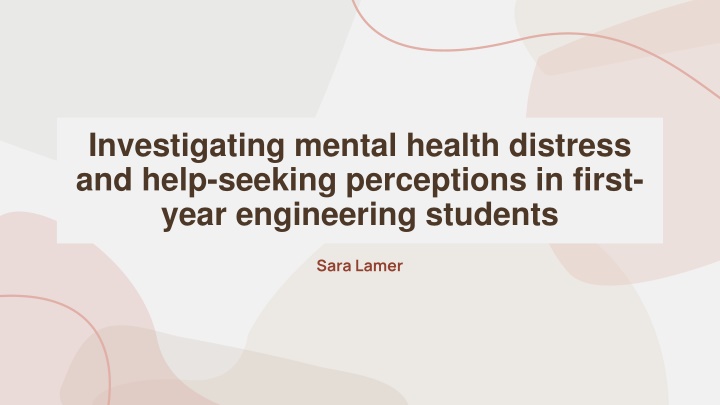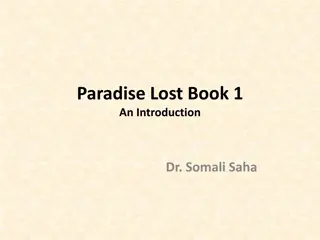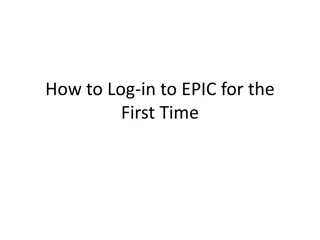ePIC BTOF Assembly Plans at University of California Santa Cruz
This document outlines the assembly plans for the ePIC BTOF project led by Dr. Simone M. Mazza at the University of California Santa Cruz. It covers pre-assembly activities, assembly tasks at SCIPP, equipment needs, fund identification, and development of assembly procedures and components. The plan includes details on sensor testing, irradiation, board design, stavelet assembly, wire bonding, and quality control processes.
Download Presentation

Please find below an Image/Link to download the presentation.
The content on the website is provided AS IS for your information and personal use only. It may not be sold, licensed, or shared on other websites without obtaining consent from the author.If you encounter any issues during the download, it is possible that the publisher has removed the file from their server.
You are allowed to download the files provided on this website for personal or commercial use, subject to the condition that they are used lawfully. All files are the property of their respective owners.
The content on the website is provided AS IS for your information and personal use only. It may not be sold, licensed, or shared on other websites without obtaining consent from the author.
E N D
Presentation Transcript
Investigating mental health distress and help-seeking perceptions in first- year engineering students Sara Lamer
Help-seeking in distressed engineers Have you ever received counseling or therapy for a mental health concern? Engineers 70 Percent of respondents who have received therapy or Non-engineers 60 50 40 counseling 30 20 10 0 Distressed engineers are less likely to have received help than non-engineers 1Mitchell, Caroline, Brian McMillan, and Teresa Hagan. 2017. "Mental health help-seeking behaviours in young adults." The British journal of general practice : the journal of the Royal College of General Practitioners 67 (654):8-9.
Increasing help seeking can improve the prognosis of disorders and reduce the potential for progression to more chronic or severe disorders1 1Mitchell, Caroline, Brian McMillan, and Teresa Hagan. 2017. "Mental health help-seeking behaviours in young adults." The British journal of general practice : the journal of the Royal College of General Practitioners 67 (654):8-9.
Theoretical framework: The integrated behavioral model Perceived norm Personal agency Direct mediators Attitude Driver Intention Seeking help IBM allows for determination of beliefs that are predictive of behavior. IBM focuses on beliefs that can be targeted by interventions.
Direct Mediators Attitude Perceived norm Personal agency The presence or absencece of facilitators and barriers to seeking help. Whether important referent individuals approve or disapprove of seeking help. A student s beliefs about outcomes or attributes of seeking help.
Research questions 1) How do we measure help-seeking perceptions and intention in first- year engineering students? 2) How does mental health status vary across gender in first-year engineering students? 3) Do help-seeking perceptions and intention vary across gender and mental health distress level in first-year engineering students?
Study population Sexual Identity Gender Race/Ethnicity LGBTQ+ 11% Female 23% White 82% Black 3% Latinx 6% Male Heterosexual 89% Multiracial 5% Asian 4% 356 students participated in this study.
Prevalence of anxiety and depression Depression Anxiety Anxiety Levels Depression Levels 100 100 90 90 * 80 80 70 70 60 60 50 50 40 40 30 30 20 20 10 10 0 0 None-minimal Mild Moderate Moderately severe Severe Minimal anxiety Mild anxiety Moderate anxiety Severe anxiety Male Female Male Female There is a significant difference in the amount of male and female participants. Women were more likely to self-report severe depression symptoms compared to men.
Beliefs about help seeking * * * * * Women are showing a greater intention to seek help for mental health concerns. Non-distressed students showed a more positive attitude towards seeking help than distressed students.
Conclusions Men may be experiencing more symptoms of anxiety and depression, but the difference between population sizes may be showing that change. Women are self-reporting higher levels of depression compared to men, even with the population difference. Women had more positive beliefs about seeking help compared to men. Non-distressed students had more positive beliefs about seeking help compared to distressed students.























